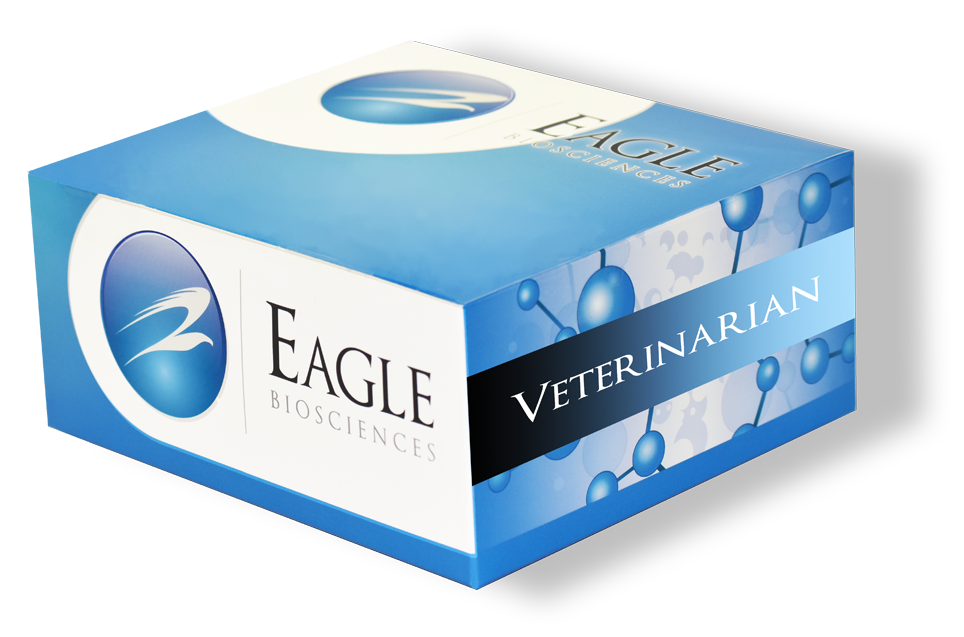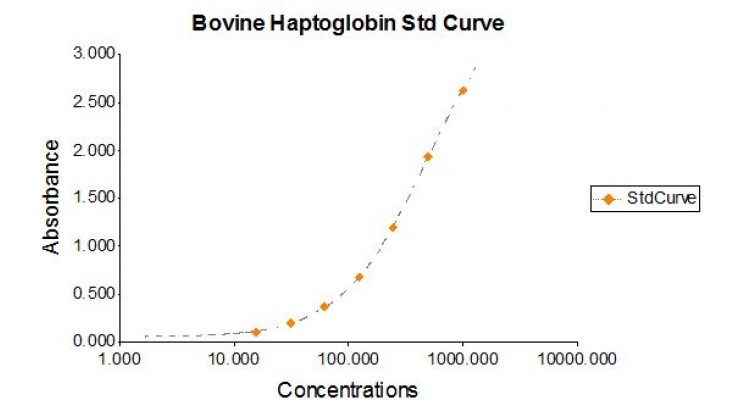Bovine Haptoglobin ELISA Assay
The Bovine Haptoglobin ELISA Assay is For Research Use Only
Size: 1×96 wells
Sensitivity: 6.258 ng/ml
Dynamic Range: 15.6 ng/ml- 1000 ng/ml
Incubation Time: 40 minutes
Sample Type: Plasma, Serum
Sample Size: 100 μL
Alternative Names: Cow Haptoglobin ELISA
Assay Background
Acute phase proteins are plasma proteins which increase in concentration following infection, inflammation or trauma. The first acute phase protein to be recognized was discovered in humans by Tillet and Frances in 1930. Haptoglobin (Hp) is a heterogeneous plasma protein mostly synthesized by the liver. The haptoglobin monomer consist of two heavy chains, beta chains (40 kD) and two light chains, alpha chains, alpha 1 (9 kD) and alpha 2 (16 kD) that are linked disulfide bonds. The three major haptoglobin types are; Hp1-1 which is monomeric (98kD), Hp1-2 is polymeric at about 200 kD, and Hp2-2 at about 400 kD. The levels in serum rise quickly following acute tissue damage within 24 to 48 hours and also fall very rapidly once the stimulus is removed. In fact, Hp level are decreased in hemolytic anemia. Hp has a high affinity for hemoglobin (Hb) and its function appears to be to prevent loss of Hb in urine which would lead to loss of iron. Investigations over the past few years have shown that quantification of Hp in plasma or serum can provide valuable diagnostic information in the detection, prognosis, and monitoring of disease not only in humans, but in companion animals and farm herds as well.
SPECIMEN COLLECTION AND HANDLING
Blood should be collected by venipuncture. The serum should be separated from the cells after clot formation by centrifugation. For plasma samples, blood should be collected into a container with an anticoagulant and then centrifuged. Care should be taken to minimize hemolysis, excessive hemolysis can impact your results. Assay immediately or aliquot and store samples at -20°C. Avoid repeated freeze thaw cycles.



